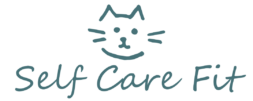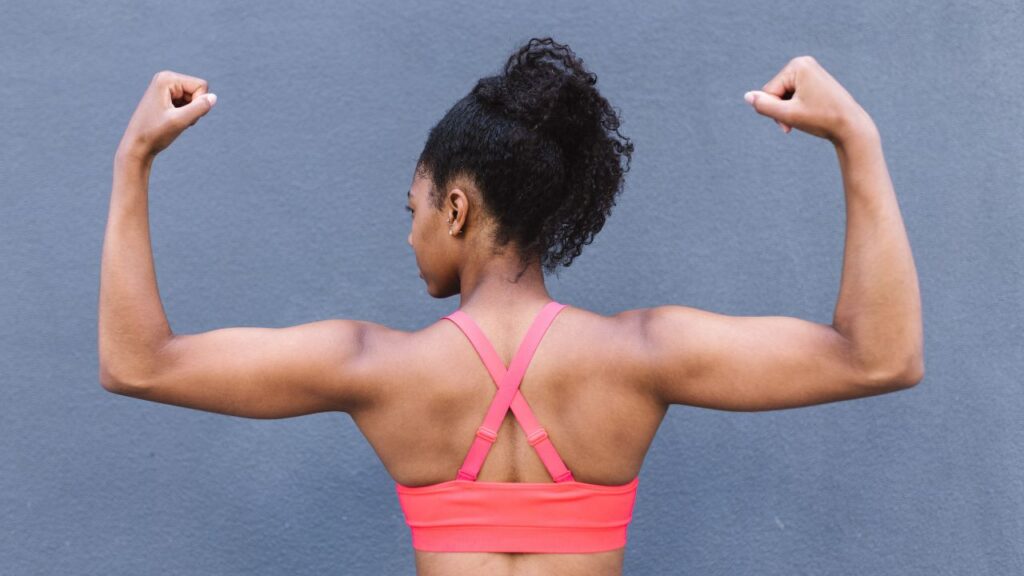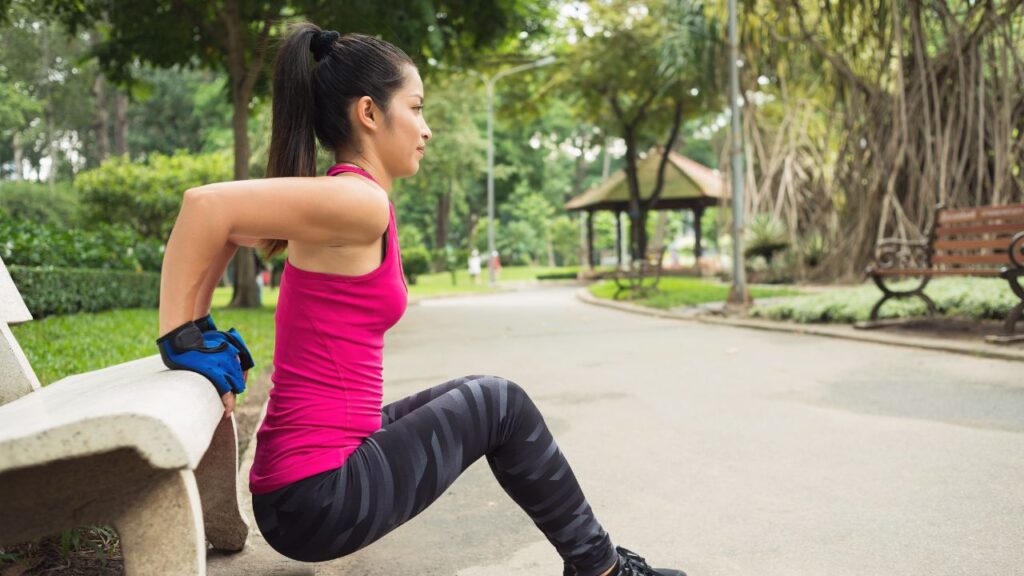
Looking for jowl exercises that actually work? Do you catch yourself pulling back your cheeks in the mirror, wondering how your jawline seemed to soften overnight?
You’re not alone.
Studies show that 75% of adults notice visible signs of jowl formation by age 45.
While aging naturally affects our facial structure, the good news is that targeted facial exercises for jowls can help restore firmness to your lower face. These exercises work by strengthening the 43 muscles that shape your face and neck area.
Whether you’re just starting to notice slight sagging or dealing with more pronounced jowls, specific face yoga techniques can help tighten and tone these areas naturally. In fact, research shows that consistent facial exercises can make you look up to three years younger in just 20 weeks.
Ready to discover how to lift and firm your jawline naturally? Let’s explore the most effective face yoga exercises that can help you achieve a more defined facial contour.
Understanding Jowls and Their Causes
Sagging jowls develop through a complex interplay of biological processes rather than simple gravity. The transformation before jowl exercises begins deep within facial structures, specifically at the bone level, where gradual resorption diminishes structural support for overlying tissues.
What causes sagging jowls needing jowl exercises
The primary mechanism behind jowl formation involves changes in facial bone structure combined with the natural aging process. As facial bones undergo resorption, the surrounding soft tissues and skin begin to shift forward, creating distinctive pockets beside the chin. Your facial structure significantly influences jowl development – individuals with delicate bone structures typically experience more pronounced jowling compared to those with stronger natural bone structures.
Role of aging and collagen loss
The aging process triggers multiple changes in skin composition and structure. The skin gradually loses essential proteins, particularly collagen and elastin, which normally maintain its firmness and elasticity. Additionally, the skin becomes thinner and less hydrated, making it increasingly vulnerable to gravitational effects.
The cheeks contain beneficial fat deposits that help maintain facial structure in youth. However, these fat pads eventually lose volume and shift downward. Furthermore, the subcutaneous connective tissue lengthens over time, contributing to increased skin laxity.
Lifestyle factors affecting jowl formation
Several environmental and lifestyle choices can accelerate jowl development:
- Sun Exposure: Ultraviolet rays damage collagen fibers, leading to premature skin sagging
- Digital Device Usage: Extended periods of looking down at phones or computers strain neck muscles and affect skin elasticity
- Weight Fluctuations: Significant weight changes cause skin stretching, potentially worsening jowl appearance
Smoking particularly impacts jowl formation by damaging collagen and elastin while constricting blood vessels, which limits nutrient delivery to the skin. Moreover, certain facial expressions and habits, such as frequent gum chewing or extended phone conversations, can contribute to muscle strain and eventual sagging.
Genetics also play a substantial role – if your parents developed pronounced jowls, you might have a higher predisposition. Nonetheless, genetic predisposition primarily relates to inherited facial structure rather than skin quality alone.
Chronic stress, dehydration, and diets lacking essential nutrients can further compromise skin health. Additionally, sleeping positions affect jowl development – side or stomach sleeping may encourage facial tissue to pull downward over time.
Understanding these various factors helps in developing targeted approaches for prevention and treatment. Although jowls naturally occur with aging, recognizing these contributing elements allows for more effective management through lifestyle modifications and targeted exercises.
Preparing Your Face for Jowl Exercises
Before diving into facial jowl exercises for jowls, proper preparation ensures optimal results and prevents skin irritation. A systematic approach to pre-exercise skincare sets the foundation for effective facial workouts.
Proper cleansing techniques
Start with thoroughly cleaned hands to avoid transferring bacteria to your face. Remove all traces of makeup and surface impurities using a gentle cleanser or micellar water. For those wearing waterproof makeup, consider the double cleansing method – first using natural oil (castor, olive, or sunflower) followed by a mild face wash.
Massage the cleanser gently with your fingertips for 60-90 seconds, allowing the product to penetrate effectively. Pay special attention to your jawline and neck area, as these regions often accumulate dirt and debris. After cleansing, pat your face dry with a soft, antimicrobial towel, being especially gentle around the delicate under-eye area.
Face massage warm-up
Once your face is clean, apply a few drops of facial oil or serum to your lower face. This creates the necessary slip for your fingers to move smoothly across the skin. Begin with these preparatory steps:
- Initial Circulation Boost
- Perform gentle shoulder rolls and head circles to release tension
- Take a comfortable position – standing, sitting, or lying down
- Keep your shoulders relaxed throughout the warm-up
- Facial Activation
- Use uplifting, quick, yet gentle movements on both sides of your face
- Press your fingertips softly into facial muscles to relieve strain
- Focus on the “third eye” area between your brows, massaging for 30 seconds
The warm-up massage serves multiple purposes – it boosts blood circulation, bringing fresh oxygen to skin cells. This deeper massage technique reaches into the muscles and encourages nutrient flow to the skin’s surface. Simultaneously, it helps reduce fluid accumulation in the lower face area.
Remember these essential guidelines during your warm-up routine:
- Maintain calm, steady breathing
- Avoid creating wrinkles during exercises
- Stop immediately if any movement feels uncomfortable
- Remove glasses before performing exercises around the eye area
- Take off heavy jewelry that might interfere with movements
This preparation phase typically takes 5-10 minutes but proves crucial for maximizing the benefits of subsequent facial exercises. A properly warmed-up face responds better to exercise, leading to more noticeable improvements in muscle tone and skin appearance.
Basic Face Yoga Moves for Jowl ExercisesBeginners
Mastering facial exercises requires starting with foundational movements that target specific muscle groups. These beginner-friendly techniques form the building blocks for a more defined jawline and reduced jowls.
Simple jaw exercises
The journey to a firmer jawline begins with exercises that strengthen the muscles supporting your lower face. Start with these proven movements:
Chin-Up Exercise Position your mouth closed and push your jaw forward gradually. Next, lift your lower lip upward until you feel tension in your chin muscles. Hold this position for 10-15 seconds. This movement effectively targets the muscles around your jawline.
Tongue Press Place your tongue firmly against the roof of your mouth, just behind your teeth. Create tension by pressing your tongue upward, subsequently making a humming sound. This vibration activates the muscles supporting your jaw and neck. Perform 3 sets of 15 repetitions.
Vowel Sounds Open your mouth to form an “O” shape, subsequently transitioning to an “E” sound. Make these movements deliberately exaggerated, ensuring your teeth remain covered throughout. Complete 3 sets of 15 repetitions.
Cheek lifts
Cheek Sculpting Smile without showing teeth while rolling your lips outward. Focus on lifting the corners of your mouth, engaging all cheek muscles upward. Place your index fingers above your mouth corners, then slide them up toward your cheekbones using firm pressure.
The Lifter Open your mouth to create a long “O.” Fold your upper lip over your front teeth, subsequently smiling to engage the cheek muscles upward. Position your index fingers lightly beneath your eyes on the upper cheeks. Perform 10 “push-ups” by alternating between relaxing and lifting your cheek muscles.
Neck stretches for jowl exercises
Incorporating neck exercises proves essential since they support overall facial muscle tone and help prevent jowl formation.
Basic Neck Stretch Maintain proper posture while sitting or standing straight. Turn your head gradually toward your right shoulder until your chin aligns with it. Hold this position for 5 seconds before returning to center. Repeat on the left side, performing 10-15 repetitions for each direction.
Neck Curl-Up Consider this movement similar to an abdominal crunch for your neck. Lie on your back, pressing your tongue against the roof of your mouth. Bring your chin toward your chest, lifting your head approximately 2 inches off the ground. Since these muscles often remain underdeveloped, start with 3 sets of 10 repetitions.
Head Tilt Begin by tilting your face slightly upward. Subsequently, lift your chin up and forward at a 45-degree angle, directing it toward one shoulder. Hold for three seconds, return to center, then repeat toward the opposite shoulder. Complete 20 repetitions on each side.
For optimal results, practice these exercises daily, ideally incorporating them into both morning and evening routines. Remember to perform movements slowly and deliberately, stopping immediately if you experience any discomfort. Consistency proves key – studies indicate that regular facial exercises can increase muscle thickness and improve facial rejuvenation when performed twice daily for 8 weeks.
Building a Daily Jowl-Tightening Routine
Creating an effective jowl-tightening routine requires strategic planning and consistent practice. Research indicates that performing facial exercises for 20 weeks can make you appear approximately three years younger.
Morning exercises
Start your day with these energizing facial movements:
Warm-Up Sequence Apply your preferred facial oil or serum for smooth movement. Begin with gentle tapping motions across your face, starting from the clavicles and moving upward toward the hairline. This technique enhances blood circulation and prepares facial muscles for exercise.
Morning Core Routine
- Cheek Sculpting (3-5 sets)
- Create an “O” shape with your mouth
- Wrap lips around teeth
- Transition between “O” and smile shapes
- V-Exercise (10-second holds)
- Form a V-shape with fingers at mouth corners
- Contract chin muscles
- Tilt head slightly backward
Evening routine
Nighttime exercises focus on releasing tension accumulated throughout the day:
Relaxation Sequence Incorporate these movements after cleansing:
- Jivha Bandha (Locked tongue pose)
- Curl tongue tip toward roof of mouth
- Hold while breathing deeply
- Release gradually
Deep Tissue Work Perform gentle pinching movements along your jawline, pressing downward instead of pulling outward. This technique helps boost collagen production and enhance circulation.
Weekly schedule
Following a structured weekly plan optimizes results:
Monday-Wednesday: Focus on foundational exercises
- Morning: Cheek lifts and V-exercises
- Evening: Tension release and lymphatic drainage
Thursday-Friday: Intensive muscle work
- Morning: Complete facial workout combining multiple exercises
- Evening: Deep tissue massage and relaxation techniques
Saturday: Comprehensive session
- Combine exercises from throughout the week
- Extended massage session for enhanced circulation
Sunday: Recovery day
- Light stretching
- Gentle facial massage
- Evaluate progress and adjust routine as needed
For optimal results, maintain these essential guidelines:
- Practice exercises daily for 30 minutes
- Start gradually, building up exercise duration over time
- Perform movements with clean hands and moisturized skin
- Stay consistent – regular practice yields better outcomes
- Monitor progress through weekly assessments
Remember to hydrate adequately after completing your facial exercises, as your face undergoes a workout similar to other muscle groups. Studies demonstrate that participants who maintained consistent practice showed visible improvements in facial appearance after following this structured approach.
Supporting Habits for Better Results
Optimizing your facial exercises with supportive lifestyle habits amplifies the effectiveness of jowl-tightening efforts. Research demonstrates that combining targeted exercises with proper nutrition and sleep habits yields superior results.
Diet changes that help
A nutrient-rich diet strengthens facial muscles and maintains skin elasticity. Foods particularly beneficial for jowl tightening include:
- Omega-3 Rich Foods: Salmon and other fatty fish support skin membrane health and maintain hydration
- Antioxidant Sources: Berries, citrus fruits, and dark green vegetables boost collagen production
- Protein-Rich Options: Lean meats, tofu, and legumes provide essential building blocks for skin repair
Staying hydrated proves crucial, as proper water intake helps maintain skin elasticity and supports muscle function. Alongside hydration, incorporating foods high in vitamin C aids collagen synthesis, while those containing zinc promote skin repair.
Sleep positions to prevent sagging
Your sleeping position significantly impacts jowl formation. Studies indicate that certain sleep habits can accelerate facial tissue sagging. Consider these evidence-based recommendations:
Back Sleeping Benefits Sleeping on your back represents the optimal position for preventing jowl formation. This position:
- Minimizes facial compression
- Reduces morning puffiness
- Prevents creation of sleep lines
For those struggling to maintain back sleeping, using specialized pillows designed to support the head can help prevent facial tissue from folding. Additionally, elevating your head slightly (20-30 degrees) helps prevent fluid accumulation.
Skincare tips
Proper skincare complements facial exercises by maintaining skin health and elasticity. Essential components include:
Daily Protection
- Apply broad-spectrum sunscreen to shield against UV damage that breaks down collagen
- Use moisturizers containing hyaluronic acid for optimal hydration
Active Ingredients Incorporate products containing:
- Retinol: Stimulates collagen production and facilitates cell turnover
- Peptides: Enhance skin firmness and elasticity
- Vitamin C: Protects against free radical damage while boosting collagen synthesis
Combining these supportive habits with regular facial exercises creates a comprehensive approach to jowl tightening. Studies show that participants who incorporated both dietary improvements and proper sleep positions alongside their exercise routines experienced enhanced results.
Remember to maintain consistency with both exercises and these supporting habits. Research indicates that holistic approaches yield better outcomes than isolated interventions. By addressing jowl formation through multiple channels – exercise, nutrition, sleep, and skincare – you create an environment that supports lasting improvements in facial contours.
Conclusion on jowl exercises
Face yoga exercises offer a natural, effective solution for tightening jowls and restoring facial definition. Studies demonstrate that dedicated practice of these techniques, combined with proper preparation and execution, can make you appear years younger within just 20 weeks.
Success depends largely on consistency and attention to detail. Regular practice of basic moves, followed by more advanced techniques, strengthens facial muscles while improving skin elasticity. Supporting habits like proper nutrition, optimal sleep positions, and targeted skincare multiply these benefits.
Remember that facial transformation takes time and patience. Start with simple exercises, gradually build your routine, and stay committed to your practice. Though results vary among individuals, scientific evidence confirms that face yoga, when performed correctly and regularly, helps achieve a firmer, more youthful jawline naturally.


